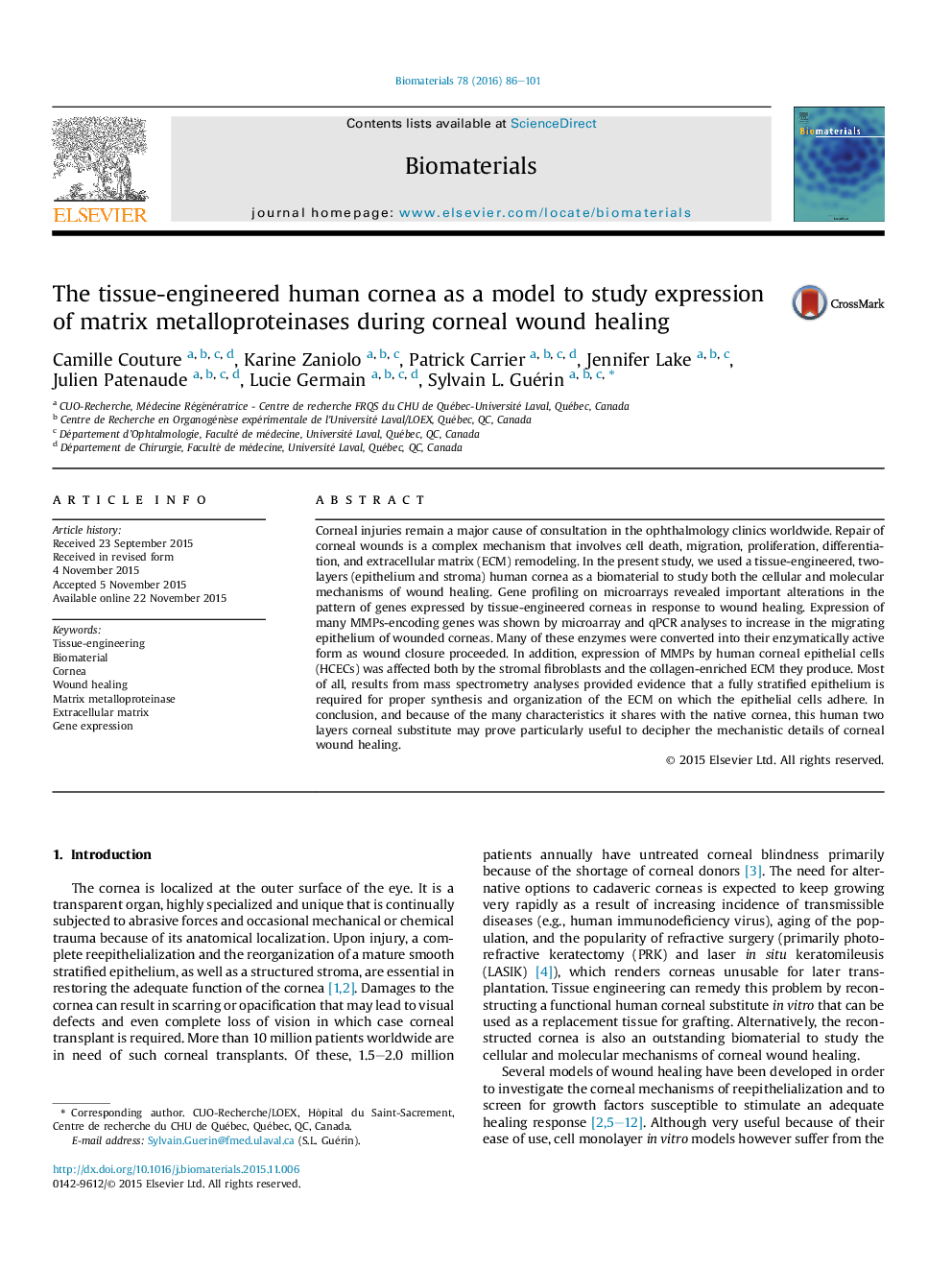| Article ID | Journal | Published Year | Pages | File Type |
|---|---|---|---|---|
| 6485210 | Biomaterials | 2016 | 16 Pages |
Abstract
Corneal injuries remain a major cause of consultation in the ophthalmology clinics worldwide. Repair of corneal wounds is a complex mechanism that involves cell death, migration, proliferation, differentiation, and extracellular matrix (ECM) remodeling. In the present study, we used a tissue-engineered, two-layers (epithelium and stroma) human cornea as a biomaterial to study both the cellular and molecular mechanisms of wound healing. Gene profiling on microarrays revealed important alterations in the pattern of genes expressed by tissue-engineered corneas in response to wound healing. Expression of many MMPs-encoding genes was shown by microarray and qPCR analyses to increase in the migrating epithelium of wounded corneas. Many of these enzymes were converted into their enzymatically active form as wound closure proceeded. In addition, expression of MMPs by human corneal epithelial cells (HCECs) was affected both by the stromal fibroblasts and the collagen-enriched ECM they produce. Most of all, results from mass spectrometry analyses provided evidence that a fully stratified epithelium is required for proper synthesis and organization of the ECM on which the epithelial cells adhere. In conclusion, and because of the many characteristics it shares with the native cornea, this human two layers corneal substitute may prove particularly useful to decipher the mechanistic details of corneal wound healing.
Keywords
Related Topics
Physical Sciences and Engineering
Chemical Engineering
Bioengineering
Authors
Camille Couture, Karine Zaniolo, Patrick Carrier, Jennifer Lake, Julien Patenaude, Lucie Germain, Sylvain L. Guérin,
